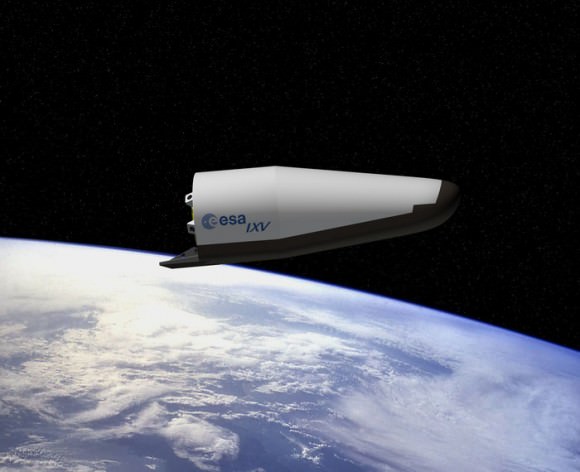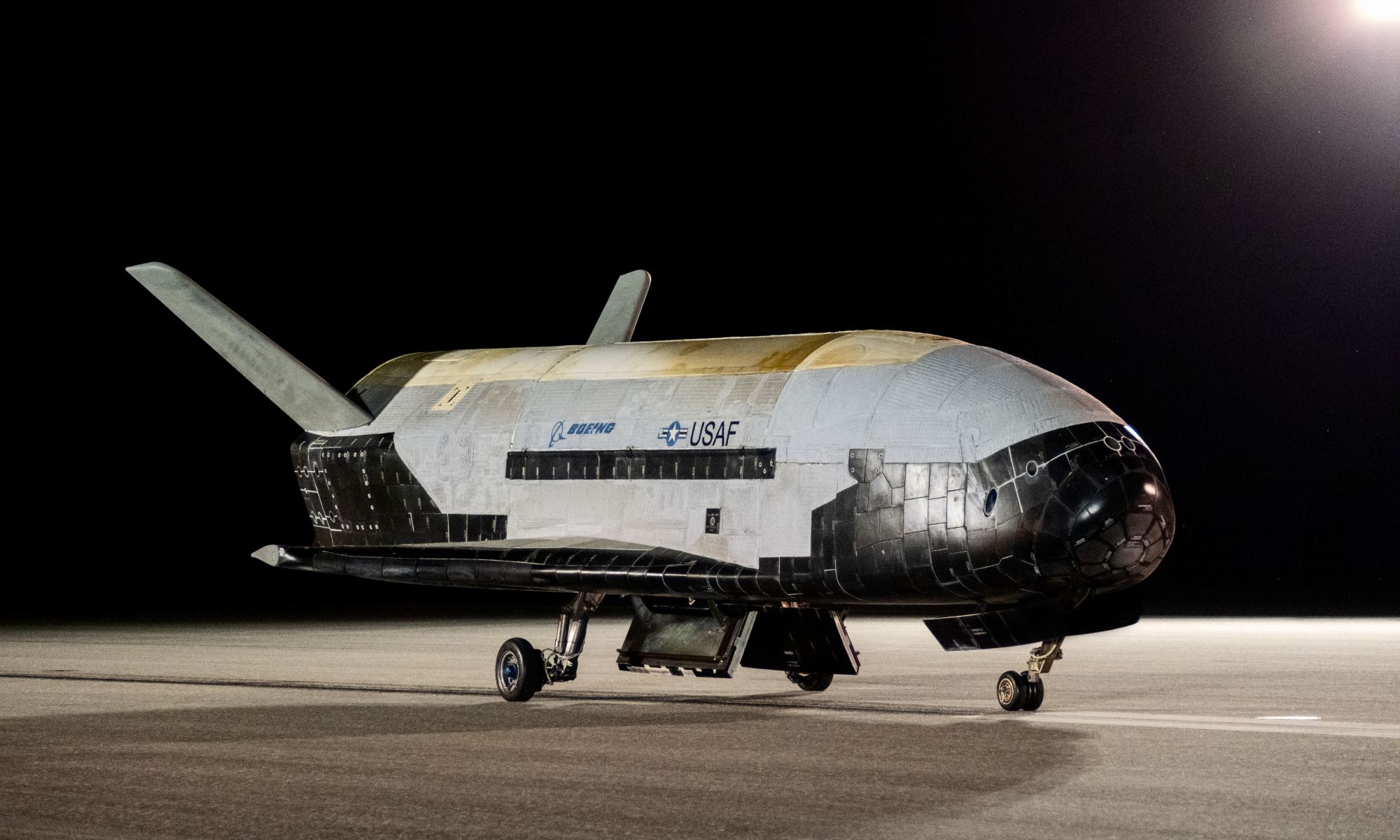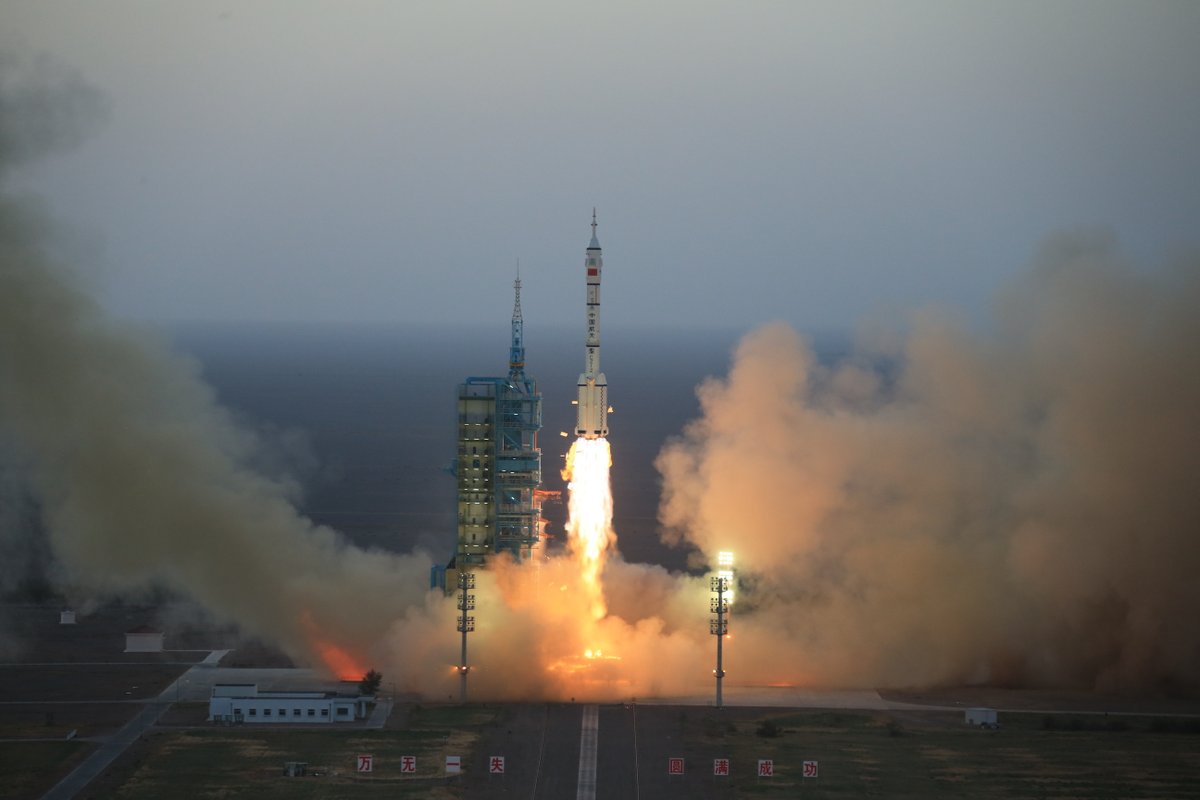Access to space is getting easier and more accessible as more and more platforms are coming online that can significantly decrease the cost of getting into Earth’s orbit or even beyond. Now, another company has taken a step forward in making inexpensive, reusable access to space a reality. Dawn Aerospace, which operates out of the US, New Zealand, and the Netherlands, has successfully tested a prototype spaceplane.
Continue reading “A Rocket-Powered Spaceplane Completes a Successful Test Flight”The X-37B is Back After 908 Days in Orbit. What was it Doing up There? That's Classified
At 5:22 AM Eastern Time on November 12, the Space Force’s (and Air Force’s) X-37B spaceplane landed back on Earth after two and a half years in orbit. The secretive spaceplane has now performed 6 missions, and the latest, OTV-6, was the longest flight yet. Details about the X-37B’s purpose are scarce, though it is clear that the vehicle is designed to serve as a testbed for advanced spaceflight capabilities. Here’s what we know about the latest mission.
Continue reading “The X-37B is Back After 908 Days in Orbit. What was it Doing up There? That's Classified”China’s New Reusable Spaceplane Lands After 2 Days in Space
On Friday, Sept. 4th, China launched a new and mysterious spacecraft from the Jiuquan Satellite Launch Center. The nature (and even appearance) of the spacecraft remains unknown, but according to statements made by Chinese authorities, it’s a reusable spaceplane. This vehicle is essentially China’s answer to the USAF/USSF X-37B Orbital Test Vehicle (OTV), which made its sixth launch to space (OTV-6) back in late-May.
Continue reading “China’s New Reusable Spaceplane Lands After 2 Days in Space”NASA’s Next-Generation Spaceplane Passes Free Flight Test
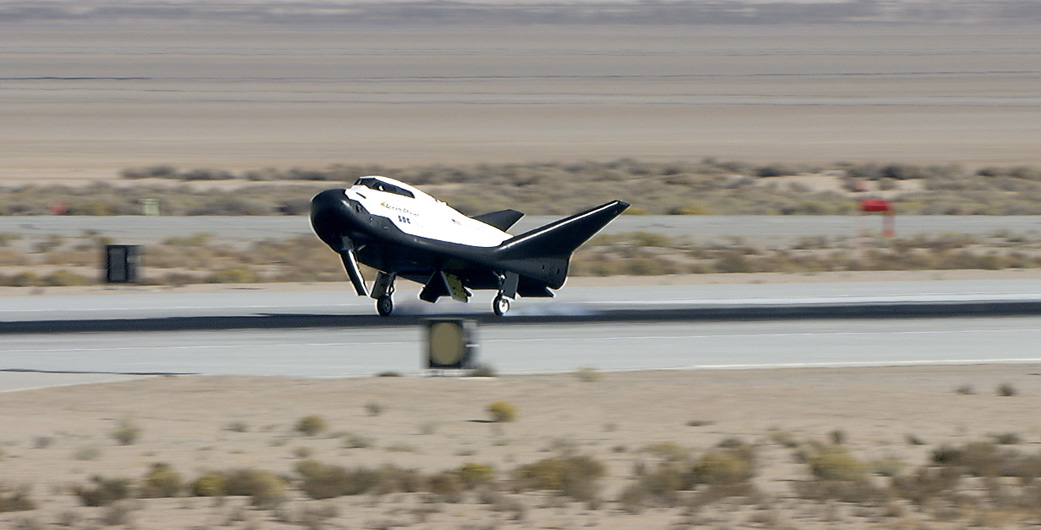
It’s called the Dream Chaser, a reusable spaceplane that will one day transport cargo and crews to the International Space Station. For the past ten years, the Sierra Nevada Corporation and NASA have been developing and testing this next-generation space vehicle. When it is ready, this vehicle will not only provide a more cost-effective way of servicing the ISS, it will also help restore domestic launch capability to the United States.
On Saturday, November 11th, the Dream Chaser passed an important milestone by conducting a successful free flight test. This took place at Edwards Air Force Base in California, and verified the spaceplane’s ability to glide and land autonomously. This, in addition to verifying several key avionic and flight systems, is a strong indication that the spaceplane will be capable of conducting runs to and from Low-Earth Orbit (LEO) in the near future.
This test involved the spaceplane being lifted to an altitude of 3,780 meters (12,400 feet) and then let go to glide freely. It then deployed its landing gears and touched down on the Edwards Air Force Base runway before coming to a full stop. This runway, it should be noted, is very similar to the Kennedy Space Center Shuttle Landing Facility runway that the Dream Chaser will land on once it is operational.
This flight test validated the performance of the Dream Chaser during what is arguably the most critical part of a mission – the approach and landing phase – which will be the final phase of future flights from the ISS. The ability to conduct automated landings is central to the spaceplane’s reusability, which operates in much the same way as the now-retired Space Shuttle did.
This process entails the craft being launched into orbit aboard a rocket (Atlas V or Ariane 5), maneuvering under its own power while in orbit so that it can dock with the ISS (or other orbiting facilities), and then re-entering the atmosphere and returning to a landing strip. As Mark Sirangelo, the corporate vice president of SNC’s Space System business area, said in a company press release:
“The Dream Chaser flight test demonstrated excellent performance of the spacecraft’s aerodynamic design and the data shows that we are firmly on the path for safe, reliable orbital flight.”
The flight test also helped advance the vehicle as part of NASA’s Commercial Crew Program and prepare it for service under Commercial Resupply Services 2 program. These programs consist of NASA working closely with private aerospace companies to develop new spacecraft and launch systems that will be capable of carrying crews to locations in LEO and to the ISS.
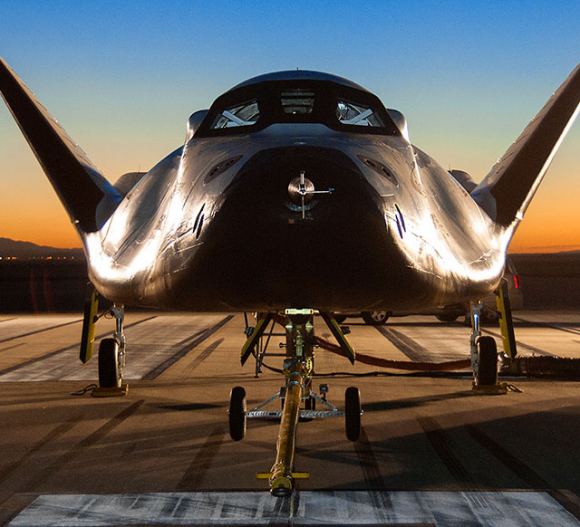
This approach and landing test expands on the phase one flight test, which took place back in October of 2013. For this free-flight test, the vehicle was released from a “skycrane” helicopter and flew a short flight, touching down less than a minute later. Just prior to landing, the left main landing gear failed to deploy resulting in a crash landing. However, the vehicle and its crew compartment were left intact.
For the second flight test, SNC and NASA incorporated orbital vehicle avionics and flight software for the first time. The trajectory also included specific program test inputs which, together with the added software, provided validations for orbital vehicle operations. Over the coming days and weeks, SNC and NASA will be evaluating all the data obtained during the flight, which includes the Dream Chaser aerodynamic and integrated system performance.
The data that SNC gathers from this test campaign will help inform the final design of the cargo Dream Chaser, which will be capable of transporting crews of six astronauts to the ISS. As Fatih Ozmen, the CEO of SNC, exclaimed:
“I’m so proud of the Dream Chaser team for their continued excellence. This spacecraft is the future and has the ability to change the way humans interact with space, and I couldn’t be happier with SNC’s dedicated team and the results of the test.”
If all goes well, SNC and NASA are hoping to begin conducting cargo deliveries by 2019. By 2024, it is hoped that a total of six cargo delivery missions will take place. No indications have been given as to when the crewed variant could start bringing astronauts to the ISS. But once that is possible, NASA will no longer be forced to rely on Roscosmos and their fleet of Soyuz rockets to send astronauts into space.
Be sure to check out this video of the Dream Chaster Cargo System, courtesy of Sierra Nevada Corporation:
Further Reading: NASA, Sierra Nevada
X-37B Secret Air Force Spaceplane Blasts Off on SpaceX Falcon 9 as Monster Hurricane Irma Threatens Florida Peninsula
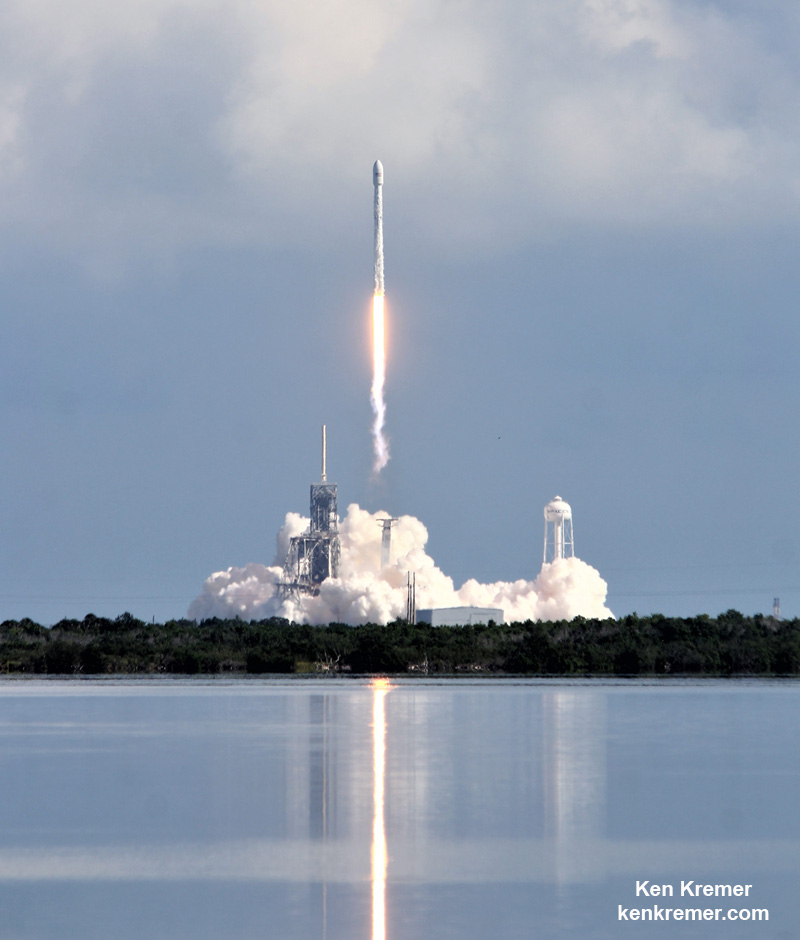

KENNEDY SPACE CENTER, FL – Amidst the frenzy of ‘Sunshine State’ preparations for Cat 5 monster Hurricane Irma and quite dismal weather favorability odds, the skies surrounding the Florida Space Coast suddenly parted just in the nick of time enabling the Air Force’s secret military X-37B spaceplane to blast off this morning (Sept. 7) on a SpaceX Falcon 9 as the booster nailed another thrilling ground landing back at the Cape.
The SpaceX Falcon 9 roared to life at 10 a.m. EDT (1400 UTC) Thursday morning and soared aloft from seaside Launch Complex 39A on NASA’s Kennedy Space Center into nearly clear blue skies after the classified launch time was kept guarded until just 10 minutes before liftoff.
Due to the potential for catastrophic destruction from approaching Hurricane Irma this was the last chance for the X-37B to escape Florida to orbit before the Kennedy Space Center and Cape Canaveral Air Force Station almost certainly close on Friday, the backup launch opportunity.
The X-37B OTV spaceplane reached orbit as planned on SpaceX’s 13th launch of the year.
“The 45th Space Wing successfully launched a SpaceX Falcon 9 launch vehicle Sept. 7, 2017, from Kennedy Space Center’s Launch Complex 39A,” the USAF and 45th Space Wing confirmed in a post launch statement.
The Falcon 9 launch was absolutely gorgeous taking place under near perfect weather conditions at launch time and putting on a long sky show as the rocket accelerated to orbit with its precious cargo.
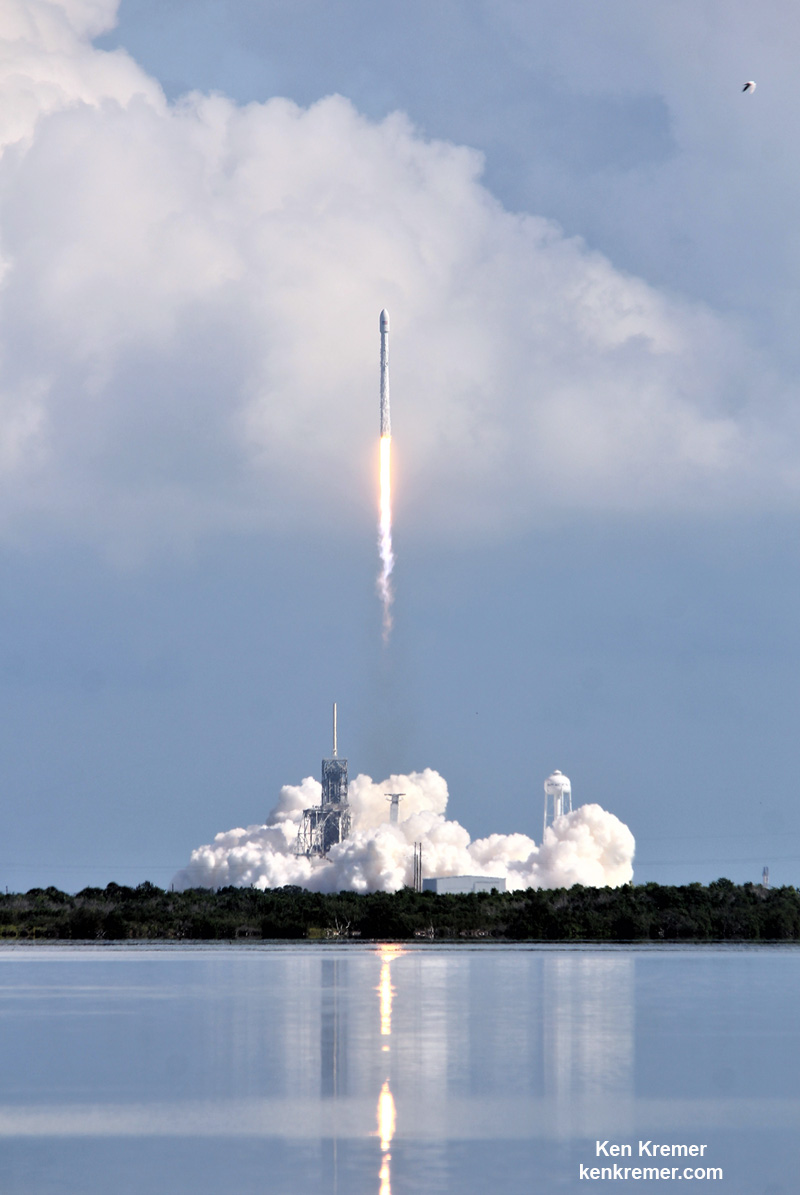
The nine Merlin 1D first stage engines ignited to generate a combined 1.7 million pounds of thrust fueled by liquid oxygen and RP-1 propellants, sending a huge exhaust plume billowing from behind as the rocket ascended off pad 39A and thundered aloft.
After first stage burnout and main engine cutoff the stages separated at T plus 2 min 26 seconds.
After successfully delivering the secret USAF mini-shuttle to orbit, SpaceX engineers completed the 2nd half of the double headed space spectacular when the Falcon 9 first stage booster successfully made a guided soft landing back at Cape Canaveral Air Force Station (CCAFS).
The boosters high speed descent generated multiple shockingly loud sonic booms as the 156-foot-tall first stage approached SpaceX’s dedicated Landing Zone-1 (LZ-1) on CCAFS that reverberated for dozens and dozens of miles across and beyond the Space coast region.
The mid-morning daylight first stage precision guided landing offered spectators a magnificent up close view of the rocket reusability technology envisioned by SpaceX’s billionaire CEO Elon Musk to drastically slash the high costs of launching people and payloads to space.
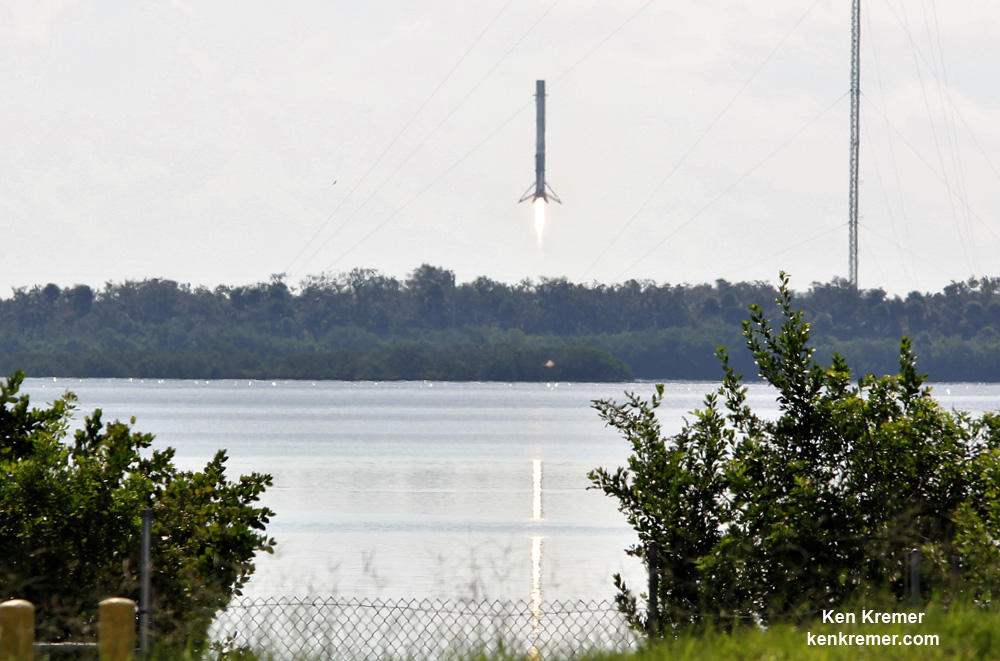
Meanwhile, Hurricane Irma continues barreling towards Florida packing winds of 185 mph as one of the strongest Atlantic storms ever. It is being closely tracked in incredibly high resolution by the new NASA/NOAA GOES-16 (GOES-R) satellite launched late last year on a ULA Atlas V in Nov 2016.
Here’s the latest storm track updated to Friday morning Sep 8:
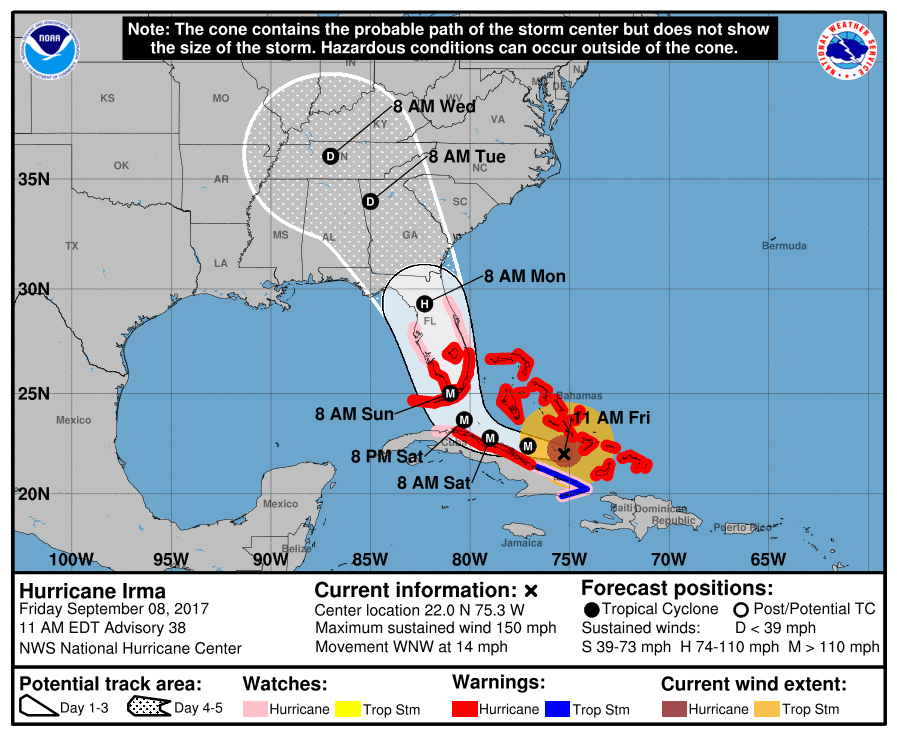
The X-37B reusable mini-shuttle is a secretive technology testing spaceplane flying on its fifth mission overall for the U.S. Air Force Rapid Capabilities Office.
“The OTV is designed to demonstrate reusable spacecraft technologies for America’s future in space and operate experiments, which can be returned to and examined on Earth,” said the USAF.
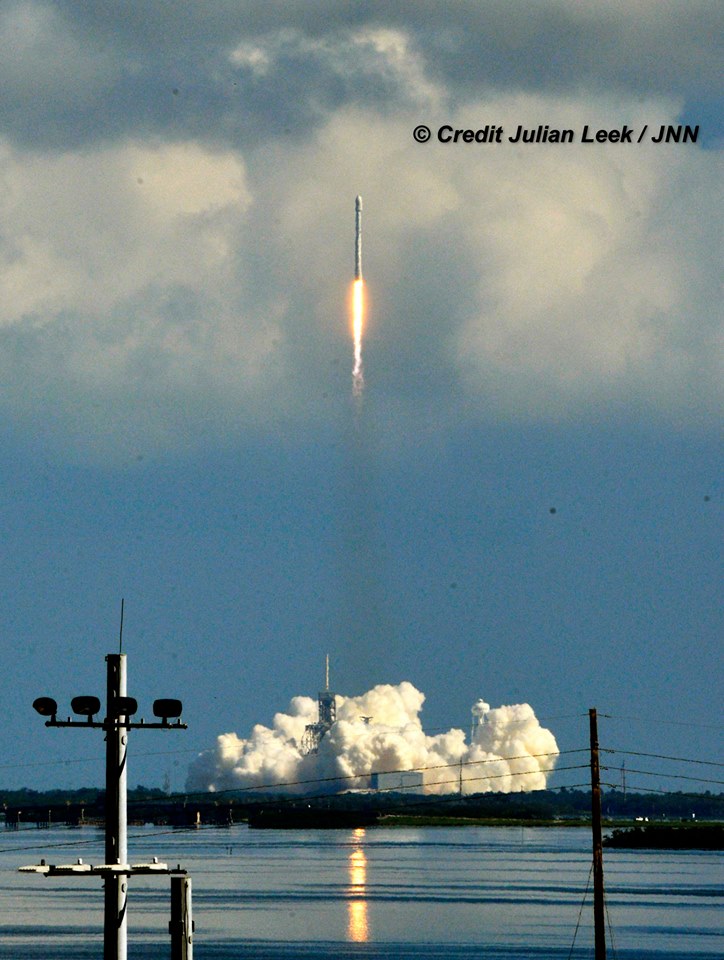
Also known as the Orbital Test Vehicle, the X-37B launched on the OTV-5 mission marks the programs maiden liftoff on the 230-foot-tall SpaceX Falcon 9.
All four prior OTV missions launched on the United Launch Alliance Atlas V and ended with runway landings in either California of Florida.
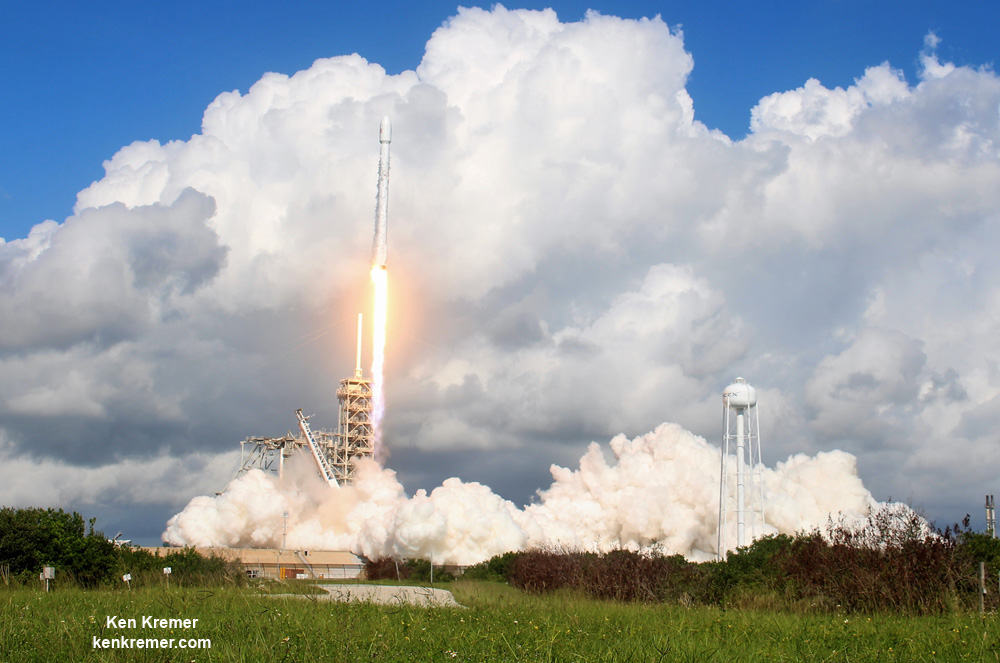
The X-37B launches vertically like a satellite but lands horizontally like an airplane and functions as a reliable and reusable space test platform for the U.S. Air Force.
The Boeing-built X-37B is processed for flight at the Kennedy Space Center, FL, using refurbished former NASA space shuttle processing facilities (OPFs) now dedicated to the reusable mini-shuttle, also named the Orbital Test Vehicle (OTV).

The last blastoff of the X-37B took place more than 2 years ago on May 20, 2015 when the OTV-4 mission launched on a ULA Atlas V on May 20, 2015 from Space Launch Complex-41 on Cape Canaveral Air Force Station.
After spending a record setting 718 days in orbit, the X-37B vehicle completed its fourth mission with a runway landing back at KSC’s Shuttle Landing Facility earlier this year on May 7, 2017.
Overall the OTV unmanned spacecraft have spent a total of 2,085 days in orbit.
The 11,000 pound (4990 kg) state-of-the art reusable OTV space plane is about a quarter the size of a NASA space shuttle. The vehicle measures 29 ft 3 in (8.9 m) in length with a wingspan of 14 ft 11 in (4.5 m).
The X-37B was originally developed by NASA but was transferred to the Defense Advanced Research Projects Agency (DARPA) in 2004.
Since then most but not all of the spaceplane’s goals have been shrouded in secrecy.
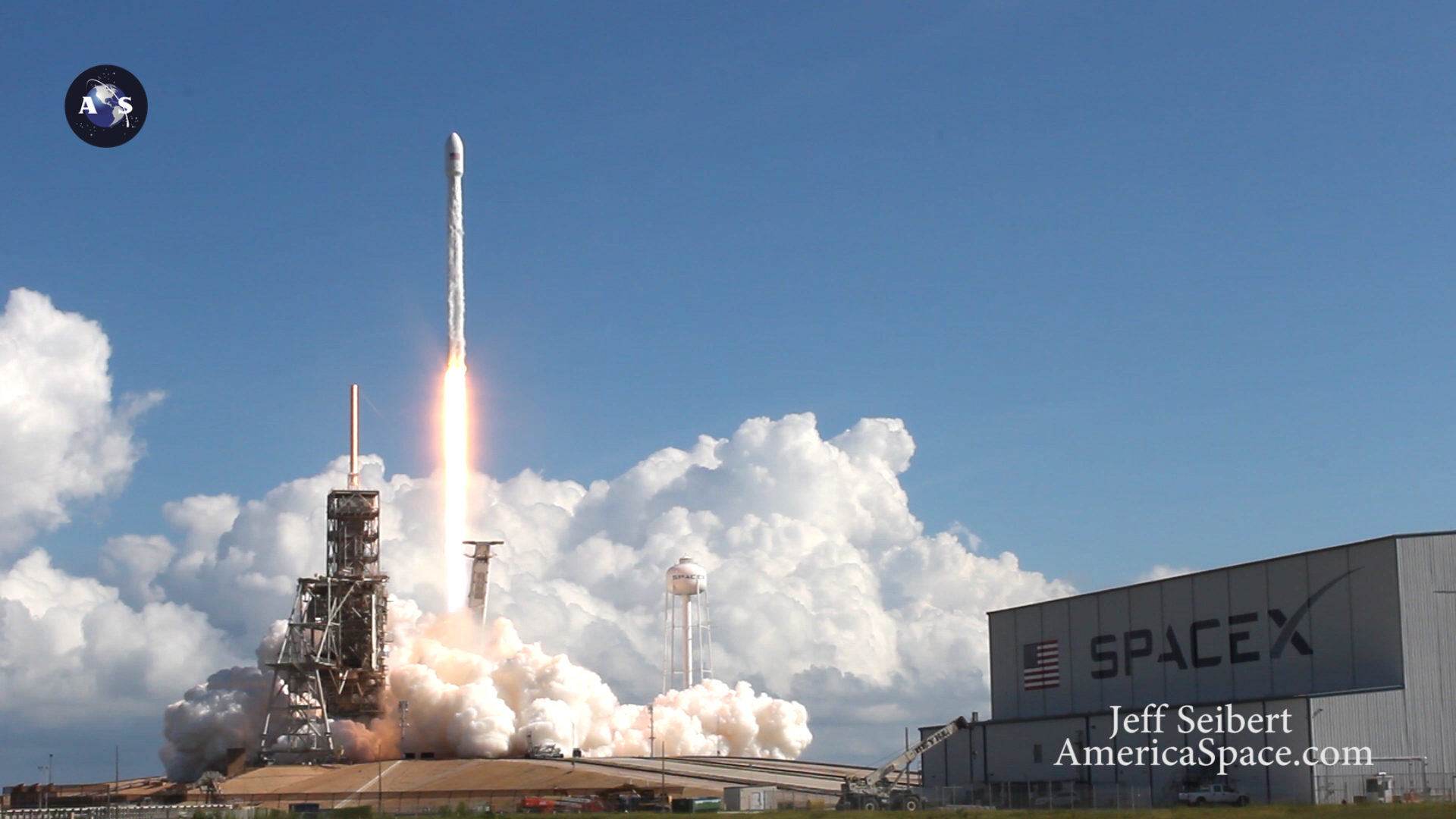
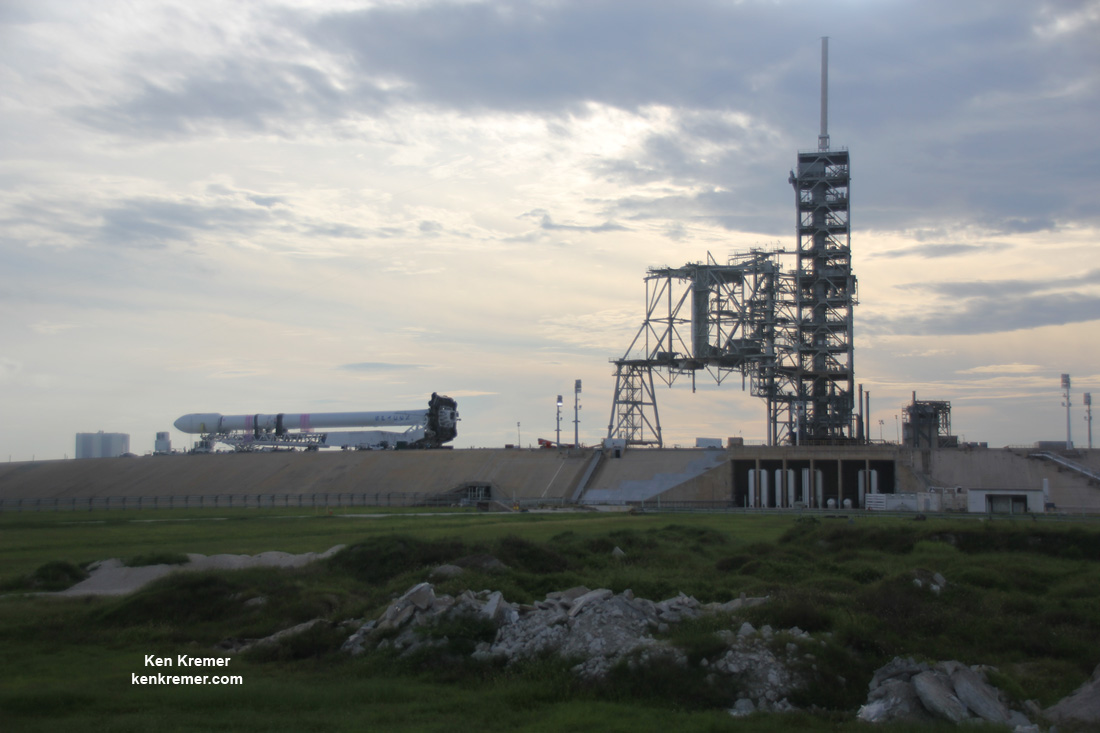
Watch for Ken’s continuing onsite X-37B OTV-5 and NASA mission reports direct from the Kennedy Space Center and Cape Canaveral Air Force Station, Florida.
Stay tuned here for Ken’s continuing Earth and Planetary science and human spaceflight news.
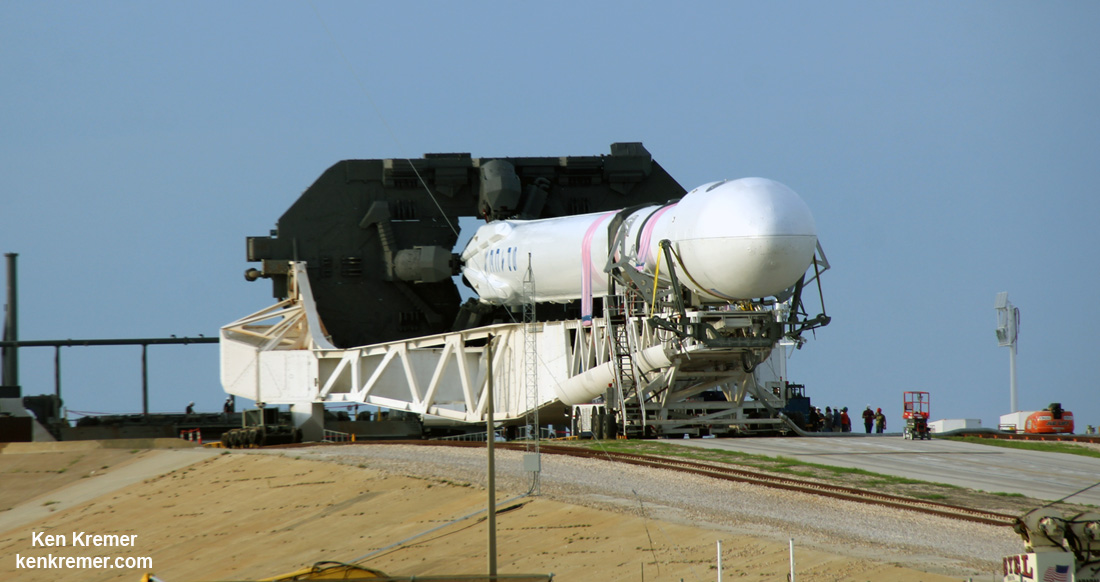

Super Secret X-37B Nears One Year In Orbit Doing ???

For years now, the program to develop the X-37B spacecraft has been shrouded in secrecy. Originally intended as part of a NASA project to develop a reusable unmanned spacecraft, this Boeing-designed spaceplane was taken over by the Department of Defense in 2004. And while it has been successfully tested on multiple occasions, there remain some unanswered questions as to its intended purpose and what has been taking place during these flights.
This, predictably, has lead to all kinds of rumors and speculation, with some suggesting that it could be a spy plane while others think that it is intended to deliver space-based weapons. It’s latest mission – which was dubbed OTV-4 (Orbital Test Vehicle-4) – has been especially clandestine. And after nearly a year in orbit, it remains unclear what the X37B has been doing up there all this time.
Continue reading “Super Secret X-37B Nears One Year In Orbit Doing ???”
Air Force X-37B Spaceplane Launches on May 20 with Military, NASA and LightSail Payloads: Watch Live

Fourth flight of the secretive U.S. Air Force X-37B Orbital Test Vehicle is set for blastoff on May 20, 2015 from Cape Canaveral, Florida. Photo: Boeing
Story updated with further details and photos[/caption]
All systems are currently “GO” for the fourth launch of the US Air Force’s secretive unmanned, X-37B military space plane this Wednesday, May 20, on a flight combining both US national security experimental payloads as well as civilian science experiments sponsored by NASA, US Universities, commercial companies, and the solar sailing LightSail test from the Planetary Society.
LightSail marks the first controlled, Earth orbit solar sail flight according to the non-profit Planetary Society. It will launch as a separate cubesat experiment. NASA also has an advanced materials science experiment flying aboard the robotically controlled X-37B.
The X-37B is set for blastoff atop a two stage United Launch Alliance (ULA) Atlas V 501 rocket on the AFSPC-5 mission under contract for the U.S. Air Force Rapid Capabilities Office.
The Boeing-built X-37B is an unmanned reusable mini shuttle, also known as the Orbital Test Vehicle (OTV) and is flying on the OTV-4 mission. It launches vertically like a satellite but lands horizontally like an airplane.
Although virtually all the goals of the X-37B program are shrouded in secrecy, some details on the national security objectives have emerged and there are several unclassified experiments flying along as secondary objectives on the rocket and space plane, among them are experiments for NASA and the Planetary Society.
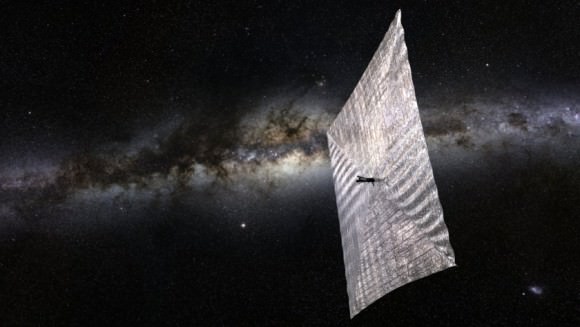
Among the primary mission goals of the first three flights were check outs of the vehicles capabilities and reentry systems and testing the ability to send experiments to space and return them safely. OTV-4 will shift somewhat more to conducting research.
“We are excited about our fourth X-37B mission,” Randy Walden, director of the USAF’s Rapid Capabilities Office, said in a statement. “With the demonstrated success of the first three missions, we’re able to shift our focus from initial checkouts of the vehicle to testing of experimental payloads.”
Liftoff will take place from Space Launch Complex (SLC)-41 at Cape Canaveral Air Force Station, Florida, at some point during a four hour launch period that opens at 10:45 a.m. EDT and extends until 2:45 p.m. EDT on May 20.
ULA announced that the Launch Readiness Review was completed on Monday and everything is progressing normally toward the AFSPC-5 launch. The rocket is fully assembled and the space plane is encapsulated inside the 5 meter diameter payload fairing. It rolled out to the pad today, Tuesday, May 19.
You can watch the Atlas launch live via a ULA webcast here: http://www.ulalaunch.com
The ULA webcast begins at 10:45 a.m. EDT on May 20. The precise launch time is classified and won’t be announced until Wednesday morning.
The weather prognosis has improved markedly to a 60 percent chance of favorable weather conditions, up from only a 40 percent chance this past weekend.
The primary weather concerns are for violations of the launch weather rules related to cumulus clouds, surface electric fields, anvil clouds and lightning.
Launch officials are hopeful that acceptable launch conditions will occur sometime during the lengthy four hour launch window.
In the event of a 24 hour delay due to weather or technical issues, the outlook drops to only a 30% chance of favorable weather conditions during the launch window.
The OTV is somewhat like a miniature version of NASA’s space shuttles. Boeing has built two OTV vehicles.
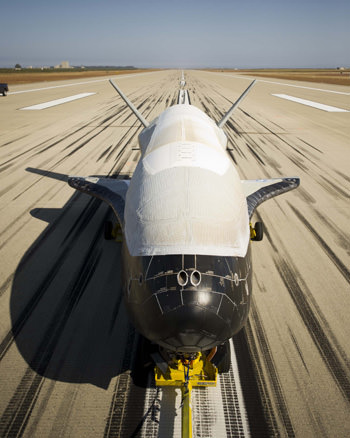
Altogether the two X-37B vehicles have spent a cumulative total of 1367 days in space during the first three OTV missions and successfully checked out the vehicles reusable flight, reentry and landing technologies.
The reusable space plane is designed to be launched like a satellite and land on a runway like an airplane and a NASA space shuttle. The X-37B is one of the newest and most advanced reentry spacecraft.
The 11,000 pound (4990 kg) state-of -the art reusable OTV space plane was built by Boeing and is about a quarter the size of a NASA space shuttle. It was originally developed by NASA but was transferred to the Defense Advanced Research Projects Agency (DARPA) in 2004.
All three OTV missions to date have launched from Cape Canaveral, Florida and landed at Vandenberg Air Force Base, California. Future missions could potentially land at the shuttle landing facility at the Kennedy Space Center, Florida.
The first OTV mission launched on April 22, 2010, and concluded on Dec. 3, 2010, after 224 days in orbit.
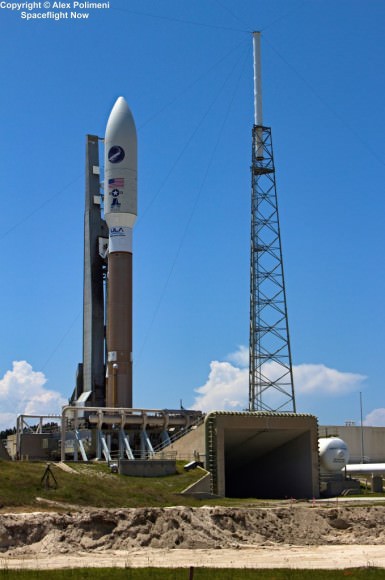
The following flights were progressively longer in duration. The second OTV mission began March 5, 2011, and concluded on June 16, 2012, after 468 days on orbit. The third OTV mission launched on Dec. 11, 2012 and landed on Oct. 17, 2014 after 674 days in orbit.
The vehicle measures 29 ft 3 in (8.9 m) in length with a wingspan of 14 ft 11 in (4.5 m). The payload bay measures 7 ft × 4 ft (2.1 m × 1.2 m). The space plane is powered by Gallium Arsenide Solar Cells with Lithium-Ion batteries.
The OTV-4 mission will shift its focus at least somewhat from tests of the vehicles performance to more on science experiments both with extra capacity available on the Atlas V rocket and payload space aboard the X-37B itself.
“We’re very pleased with the experiments lined-up for our fourth OTV Mission OTV-4,” Walden noted.
“We’ll continue to evaluate improvements to the space vehicle’s performance, but we’re honored to host these collaborative experiments that will help advance the state-of-the-art for space technology
Among the experiments for the flight are 10 CubeSats. They will launch in the Aft Bulkhead Carrier (ABC) located below the Centaur upper stage that contains eight P-Pods to release the CubeSats.
Following primary spacecraft separation the Centaur will change altitude and inclination in order to release the CubeSat spacecraft, ULA said in a statement.
They are sponsored by the National Reconnaissance Office (NRO) and NASA and were developed by the U.S. Naval Academy, the Aerospace Corporation, the Air Force Research Laboratory, California Polytechnic State University, and Planetary Society.
NASA is also flying an advanced materials science payload on the X-37B called the Materials Exposure and Technology Innovation in Space (METIS) investigation that will build on more than a decades worth of materials science research on the International Space Station (ISS) research.
“By flying the Materials Exposure and Technology Innovation in Space (METIS) investigation on the X-37B, materials scientists have the opportunity to expose almost 100 different materials samples to the space environment for more than 200 days. METIS is building on data acquired during the Materials on International Space Station Experiment (MISSE), which flew more than 4,000 samples in space from 2001 to 2013, NASA said in a statement.
“By exposing materials to space and returning the samples to Earth, we gain valuable data about how the materials hold up in the environment in which they will have to operate,” said Miria Finckenor, the co-investigator on the MISSE experiment and principal investigator for METIS at NASA’s Marshall Space Flight Center in Huntsville, Alabama.
“Spacecraft designers can use this information to choose the best material for specific applications, such as thermal protection or antennas or any other space hardware.”
Stay tuned here for Ken’s continuing Earth and Planetary science and human spaceflight news.
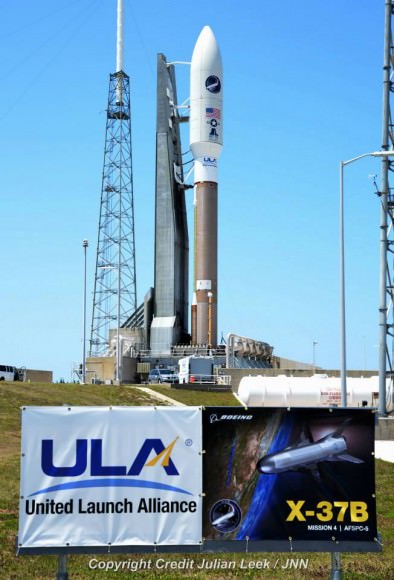
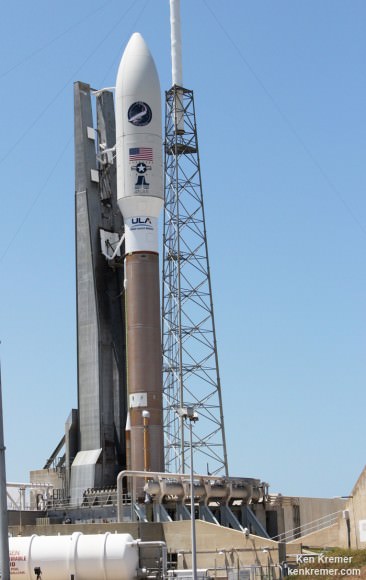
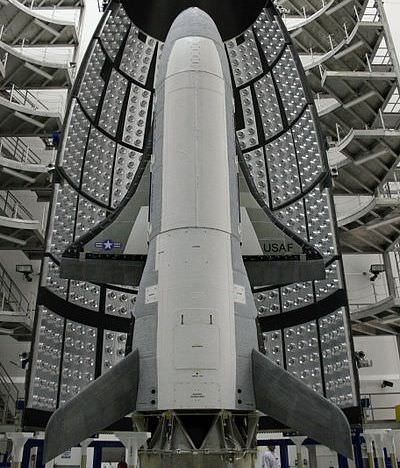
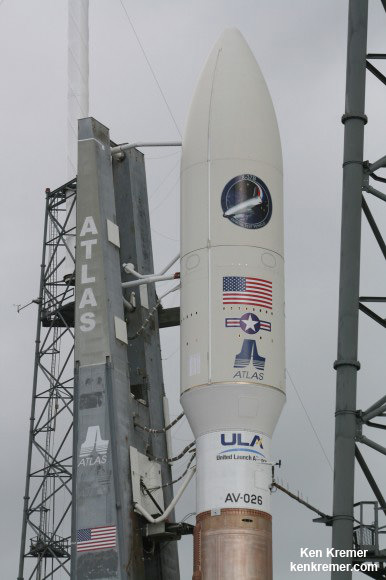
Flying Sky Car: The Skylon Explainer Inspired by xkcd

Just about everyone can claim to being inspired by the xkcd webcomic — or at least enjoying a shared nerd moment. A favorite comic of many space fans is the Up Goer Five poster, which explains the Saturn V rocket in the “10 hundred” (i.e. 1,000) English words that are used most frequently.
Now, one fan of xkcd, celerycoloured on reddit has created a poster of the single-stage-to-orbit Skylon spaceplane being built by the British company Reaction Engines Limited (REL). With some great hand-drawn graphics, this homage poster uses — again — the most commonly used words in the English language to explain Skylon:
“The first space car that may go to space without parts falling off” describes the single stage to orbit idea, and “this space car can burn the air outside so it doesn’t have to take so much breathing type air or drop parts” explains the air-breathing SABRE engines.
“I’d just like people to know more about REL,” celerycoloured told Universe Today. “Their efforts towards reusable SSTO spacecraft is one of the coolest things I’ve seen!”
Read about Skylon in more complex terms here.
In other space plane news today, ESA’s Intermediate eXperimental Vehicle IXV successfully launched on a Vega rocket from the Kourou space center for a one hour forty minute test flight. This is a lifting body vehicle similar to the X37B, however the IXV splashed down in the ocean for this first flight.
